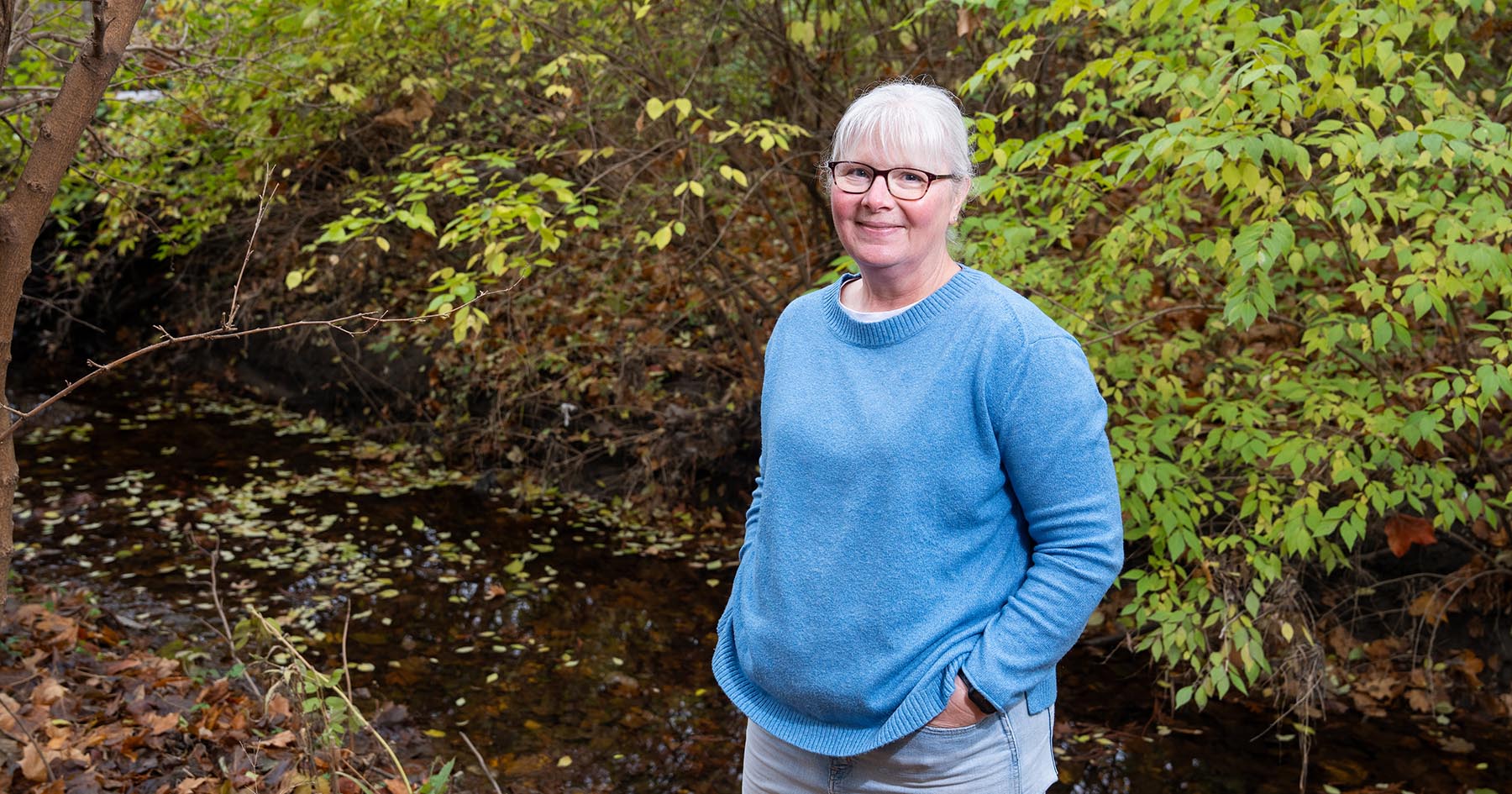Purdue entomologist: ‘Ask yourself if it really looks like a kissing bug’
The Centers for Disease Control and Prevention recently issued a warning regarding the Triatoma sanguisuga insect, more commonly known as the kissing bug. The statement said the bug could now be found in 12 states, including Indiana. Triatoma sanguisuga is best known for transmitting a parasitic disease known as Chagas, which can initially cause flu-like symptoms, but if left untreated can become chronic and even fatal. The kissing bug is native to Central and South America, where the CDC estimates roughly 8 million people are infected.
The presence of a new vector-borne illness is always cause for alarm, but do Hoosiers need to be seriously concerned about the risks caused by kissing bugs? Catherine Hill, professor of entomology and vector biology, said not at this time.
“Unless you’re traveling to an area where Chagas is endemic, your risk of contracting the disease is very low. Currently, the CDC reports only one species that has the potential to transmit this disease in Indiana,” Hill said.
There have been no reports of locally acquired Chagas in Indiana, Hill continued. The behavior of the kissing bug and standard of housing construction in Indiana and around the United States already lower the risk of transmission compared with areas in Central and South America.
“Kissing bugs are often associated with substandard housing. They’re also typically most active at night. Often, they are found in sheltered spaces, like wood or rock piles, and can be common in some rural environments,” Hill said.
Many people believe Chagas, like Lyme disease, is transmitted through the insect’s bite. This, however, is not the case. Kissing bugs pick up the disease from blood-feeding on an infected human, mammal, bird or other vertebrate, but Chagas is transmitted through the insect’s feces, not its bite.
“If you have an infected bug feeding on you it is likely to defecate during the feeding process,” Hill said. “The feces can contain the parasite and if this is rubbed into the wound or introduced to the mucosal membrane then infection is possible.”
Entomologists throughout the state are still trying to determine the kissing bug’s presence in Indiana. One challenge, according to Tim Gibb, professor of entomology, is that the kissing bug strongly resembles other home invading insect species, like the boxelder bug, which is common in Indiana but poses no public health risk. Often times when people report seeing a “kissing bug” it is only something that resembles it.
Hill said the best way to lessen panic about Chagas and the presence of the kissing bug is for the public to educate itself through resources provided by the CDC and land-grant universities like Purdue.
“Before capturing it and sending it someplace, you should educate yourself on what kissing bugs look like. Ask yourself if it really looks like a kissing bug,” Hill said.
If a person is fairly confident in their identification, Hill said, they should not touch the bug or squash it. Instead capture it in a bag or container and send it to an entomologist for identification. At Purdue, suspected bugs should be sent to the Plant and Pest Diagnostic Lab.
If traveling to a country where Chagas is common, Hill advises the following precautions:
- Repellant won’t work well, but staying in accommodations that are well-constructed is key, and arming yourself with information about where the bug is most prevalent can help you avoid those areas.
- If experiencing symptoms of Chagas after returning from a country where the disease is common, Hill advises seeking immediate medical treatment and getting tested. This will help prevent local transmission of Chagas.
“There are two scenarios where I see the risk posed by Chagas increasing,” she said. “That would be if we detect another species of kissing bug in the state that’s a known vector of Chagas or if we detected local or domestic transmission.”
It’s important, however, that the recent news about kissing bugs not distract from other vector-borne illnesses that currently pose a much more substantial risk than Chagas, like West Nile virus, Lyme disease and others.
“We really don’t want to take our eye off some of the higher-risk arthropods and diseases right now,” Hill warned. “We’re going into West Nile season and, in fact, West Nile has already been detected in several pools of mosquitoes around the state. As we move into late summer the risk of transmission to humans will only increase.”





